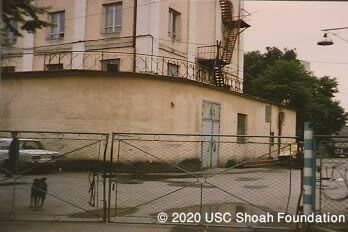
Rudolf's Mill. A view from the 1990s
USC Shoah Foundation Institute, University of Southern California, Copy YVA 14680383
Rudolf’s Mill Related Communities
Stanislawow Related Murder Sites


According to the materials of the postwar trials of the perpetrators of the massacres in Stanisławów, several shootings of Jews took place in the mill courtyard. There, Jews of various ages and of both sexes would be taken to a large pit just outside the mill and shot dead in the back of the head by German security policemen.